Winter 2016: Prose
Bone of the Past
Nonfiction by Burky Achilles
These past few months I’ve been teaching English as a second language in a government high school in Issan Province in eastern Thailand. Issan prides itself on khao niau or sticky rice, grown in a glistening patchwork of paddies that blanket the countryside. Following a monsoon rain the paddies are swollen. Farmers wade knee-deep, bent at the waist to plant the final shoots of this year’s crop, a scene straight out of my Kauai childhood in the 1960s, only the crop was sugarcane and plantation workers bent over hoes.
I live in the center of Amnat Charoen in a modern, but small, apartment building that caters to farang or foreigners. My room is about sixteen by twenty feet, judging by the floor tiles. It has no kitchen, but does have a high ceiling and miniature deck, half of which is taken up by a clothes-drying rack. Just like Kauai in the ’60s, there are no electric dryers. Instead clothes, sheets and towels dry stiff in humid heat and smell like the sun or maybe smoke during field-burning time.
I am half a block from morning and evening markets where I frequent the food carts most nights. Food is cooked to order — grilled chicken, salted fish or pork in one of its many incarnations with rice and green salad or Tom Sum Thai — a green papaya salad with searing red chilies and peanuts. The ease of procuring tasty food cheap reminds me of Kauai’s mom and pop stores and the comfort food of my childhood — SPAM musubi, sushi rolls, teriyaki chicken, steamed pork buns, boiled peanuts and plate lunches to go.
The spoils of my market outings come to rest on my tiny table/desk. Tiny table is so tiny that I can choose either to eat or to write, not both. It’s accompanied by two bright-green plastic chairs that are as hard as the floor, but less comfortable. They have oddly angled backs and a waffle weave that leaves its imprint on the backs of my thighs and butt. To avoid the discomfort of skin sticking to plastic in the hundred-degree soggy heat, I keep one of the chairs covered with a small lap quilt I made, maybe thirty-five years ago, in the only quilting class I ever took. It was at Daisy Kingdom in Old Town Portland, long before Old Town, or even Portland, was hip.
At home I was using this quilt for my meditation practice. Here it fits perfectly in the bright green plastic chair and gets a lot more action — absorbing sweat and spilled food and drink — plus it mitigates the waffle effect. Although small, say four feet by four feet, it took me a long time to craft start to finish. It was pieced by machine, but all of the quilting was done by hand.
After all those hours and the final stitch, I spread it out on the floor to take in its greens and purples, admiring how the color blocks all fit together so perfectly, so unlike life, so unlike my life, that I felt it was a suitable gift for my mother. On her next birthday, I sent it and, as usual, she thanked me and that was pretty much the end of it.
Fast forward to April 8, 2013. My mother had died two days before and the house on Kauai was teeming with family — my father, brother and sister-in-law, my youngest brother and his partner, my husband. Since the morning of my mother’s death, my father had been on a mission to empty the house. It was a daunting task, as my mother loved three things: my father, her animals and shopping. We kids, of course, were loved, but since we were out living lives of our own, our places were usurped by an animal menagerie — dogs, cats, birds — lots of birds, so many my father built an aviary off the back porch to hang all the cages.
A 300-pound pot-bellied pig named Oliver, who wasn’t supposed to weigh more than fifty pounds full-grown, lived and died on the front porch where my mother, twice a day, fed him and three poodles dog food she made from scratch every few days from a Costco rotisserie chicken, ditalini pasta and frozen mixed vegetables.
Oliver predeceased my mother by a few months and was buried in a small strip of grass about ten feet off the front porch. My father would have buried him in the backyard, but because of a steep drop-off, the only way to get him into the backyard would have been through the house.
On this second full day of dispersal, moving my limbs felt like trying to lift a cement block settled ten feet deep in the ocean’s loose sand. I was in the spare bedroom, windows open, ceiling fan turned up full blast and still it seemed the air would not move as I went through my mother’s coats — mink, fox, faux-something, wool, pea, trench, sheepskin — why did a woman who spent the last fifty-four of her seventy-six years on Kauai need so many coats? My father walked in, took a quick glance at the carnage of coats on the bed, in boxes, on the floor, and without a word handed me my mother’s purse and the small black leather duffel she had taken with her to every doctor, chemo and radiation appointment.
I had never gone through anyone else’s purse. My mother was an excruciatingly private person. She did not let people into her home, let alone her purse. When I was a child, I peeked into her purse, to see what secrets it held, and she slapped my hand. Now, I was violating some deep code by searching these pockets and niches my mother had so carefully filled with the financial and personal facts of her life.
In the base of the structured black duffel I felt a lump. Jewelry roll. It was the perfect size and it would be just like her to keep her most treasured jewelry, if not on her body, close at hand. I unzipped the hidden zipper, reached in and pulled. Out came the lap quilt I had made thirty-plus years before.
To say I lost it would be an understatement. I could not catch my breath. I would willingly have lain down in that pile of coats and suffocated under their weight had my father and youngest brother not found and held me.
And my father, man of few words and a broken heart after fifty-six years of marriage, said, “You should keep it.”
So here we are, my mother’s small legacy and I, a gift given then returned via the hands of death, and carried two years later to the far eastern reaches of Thailand. Amnat Charoen is so reminiscent of my childhood Kauai, with my parents in their early twenties and our whole lives ahead of us. To say I’m not the girl I once was is true and not true. I have spent tremendous energy keeping that girl locked away, only to open my mother’s closets and purse and have that girl come rushing back at me.
In an attempt to flee the scene, I came to Thailand for a break from the memories and the grieving, only to be confronted daily by some evocative link to the past — the smell of a steamy monsoon rain, a bite of ethnic food or the sight of a farmer bent to the field. To live so close to the bone of the past, to revisit a place of no return, to have memory surface randomly like long-buried shrapnel, is a painful but cherished gift.
| |

|

|
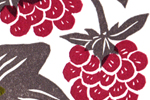 |
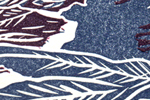 |
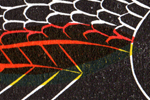 |
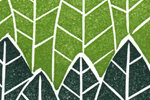 |
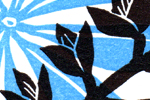 |
||||
|
Celebrating nature, home and the cycles of life – twenty poets light the winter night. |
Six stories use magic to explore loss, grief and healing. |
With imagery of flora and fauna, four artists animate the winter landscape. |
Five young women dig deep to each speak their individual truth . |
From emerging to established writers – meet the women behind our eighth issue’s voices and visions. |

|
LETTER FROM THE MANAGING EDITOR
POETRY Northwest Equinox by Kris Demien Gradations of Gray by Wendy Thompson With Gladness by Sara Graves Home by Leora Marialicia González For a Grade School Classmate by Joan Maiers Canning Factory Road by Elizabeth Stoessl To Make a Prairie by Carolyn Martin At Home by Suzy Harris Family Disagreement by Tricia Knoll The Bullfrogs by Katherine Boyer Cows by Rebecca Jamieson Lesson by Stacey Vallas Stardust by Erin Iwata Perspective by Carolyn Martin Lacrosse Season by Elizabeth Harlan-Ferlo The Tangled Path by Suzanne LaGrande Matched Set by Tanya Jarvik False Bus Stop by Elizabeth Harlan-Ferlo Last Visit by Erin Iwata October Walk with My Mother by Ann Sinclair First Rothko Exercise by Elizabeth McLagan Fractions by Susan Blackaby Tea by Melineh Yemenidjian Return by Stacey Vallas PROSE Scarab Man by Cynthia McGean Planetary Influences by Alida Thacher Bone of the Past by Burky Achilles Teachings: A Buddhist Ghost Story by Ann Sihler Wrangler by Desiree Wright A Nicaraguan Spring by Pamela Russell Bejerano FEATURED ART Into the Wonder by Annamieka Hopps Davidson Deep Blue Meditation by Annamieka Hopps Davidson Weave Me Into the Sea by Annamieka Hopps Davidson Crassula 2 by Alison Foshee Crassula 5 by Alison Foshee Crassula 6 by Alison Foshee Warm Autumn by Tamar Hammer Girl with Conch by Tamar Hammer With Her Dog by Tamar Hammer YOUNG VOICES Love Beyond Loss by Isabel Lickey Submerged by Raimy Khalife Hamdan Which Way? by Alli Rodenbaugh To Autumn by Sara Barkouli The Storm by Elie Doubleday CONTRIBUTORS |
